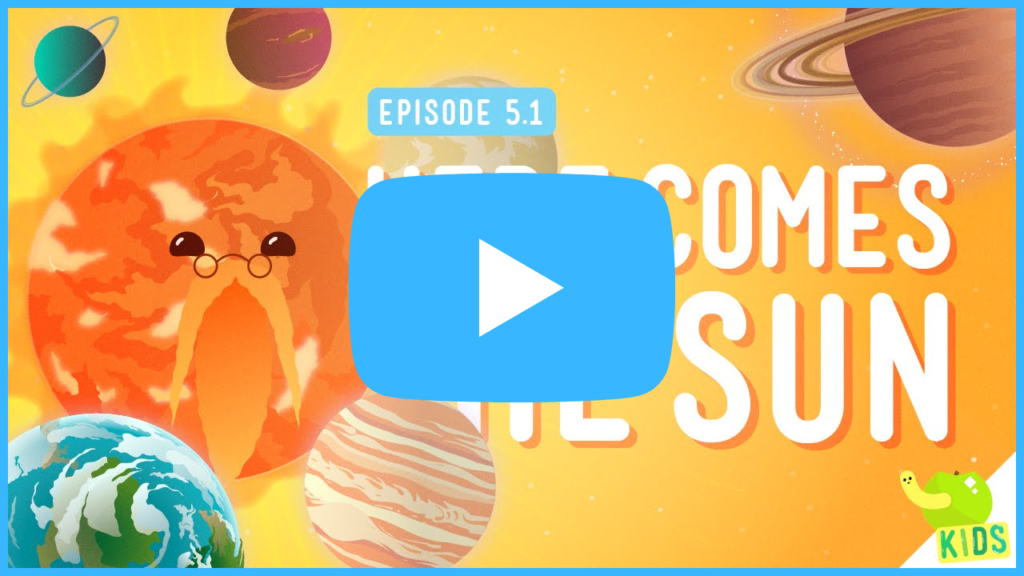This playlist of 14 videos from Crash Course Kids is all about space science, the sun and how our sun influences our planet. The contents of these videos are in line with 5th-grade science standards. Check below the videos for a list of Next Generation Science Standards used throughout the playlist. These videos are perfect for introducing new concepts and reviewing subjects already taught. These videos do a great job teaching students about space and Our sun. The overall aim of these videos is to introduce students to space science, taking a closer look at our solar system. Each video ranges in length from 3 to 6 minutes, perfectly combining education and entertainment in easily digestible segments.
Crash Course Kids Space Science: The Sun and Its Influence on Earth Complete Playlist

Next Generation Science Standards Addressed
- 5-PS3-1. Use models to describe that energy in animals’ food (used for body repair, growth, motion, and to maintain body warmth) was once energy from the sun.
- 5-ESS1-2. Represent data in graphical displays to reveal patterns of daily changes in length and direction of shadows, day and night, and the seasonal appearance of some stars in the night sky. [Clarification Statement: Examples of patterns could include the position and motion of Earth with respect to the sun and selected stars that are visible only in particular months.] [Assessment Boundary: Assessment does not include causes of seasons.]
- 5-ESS1-1. Support an argument that differences in the apparent brightness of the sun compared to other stars is due to their relative distances from Earth. [Assessment Boundary: Assessment is limited to relative distances, not sizes, of stars. Assessment does not include other factors that affect apparent brightness (such as stellar masses, age, stage).]
- 5-PS2-1. Support an argument that the gravitational force exerted by Earth on objects is directed down. [Clarification Statement: “Down” is a local description of the direction that points toward the center of the spherical Earth.] [Assessment Boundary: Assessment does not include mathematical representation of gravitational force.]
- 5-ESS2-1. Develop a model using an example to describe ways the geosphere, biosphere, hydrosphere, and/or atmosphere interact. [Clarification Statement: Examples could include the influence of the ocean on ecosystems, landform shape, and climate; the influence of the atmosphere on landforms and ecosystems through weather and climate; and the influence of mountain ranges on winds and clouds in the atmosphere. The geosphere, hydrosphere, atmosphere, and biosphere are each a system.] [Assessment Boundary: Assessment is limited to the interactions of two systems at a time.]
5th grade science,crash course,Math,Science,kids science,crash course kids,homework help,Test,Review,Physics,kids physics,astronomy,how big is the universe,Universe,distance,astronomical distance,kids astronomy,


